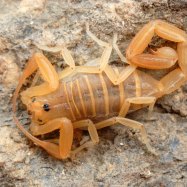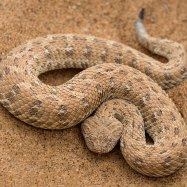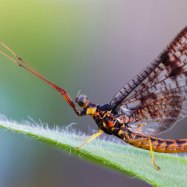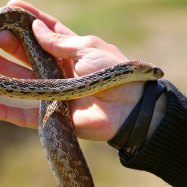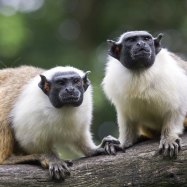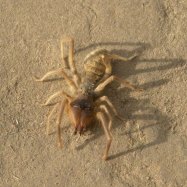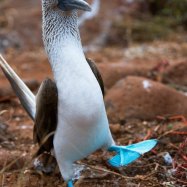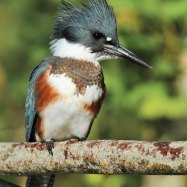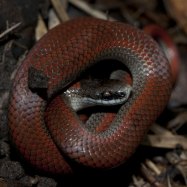
Bearded Dragon
18-24 inches
The Bearded Dragon, also known as the beardie, is a popular reptile among pet owners. Found in the Northern and central parts of Australia, this medium-sized lizard can grow up to 18-24 inches in length. Its stocky body and triangular-shaped head make it a unique addition to any home. Belonging to the family Agamidae, these gentle creatures make great companions for those looking for a low-maintenance pet. #BeardedDragon #ReptileLove #Agamidae
Animal Details Summary:
Common Name: Bearded Dragon
Kingdom: Animalia
Habitat: Desert and arid regions
The Unique World of Bearded Dragons: Fascinating Creatures of Australia
The vast and diverse land of Australia is home to an array of intriguing animals, and one of the most beloved and unique in the reptile world is the Bearded Dragon. With its scientific name Pogona vitticeps, it is often referred to as the "beardie" by its loyal human fans. These docile creatures have captured the hearts of many with their distinctive appearance, charming personalities, and fascinating behaviors.From the Kingdom of Animals: Meet the Bearded Dragon
As with all living things, the Bearded Dragon belongs to a specific kingdom and phylum, with the scientific classification of Animalia and Chordata, respectively Bearded Dragon. It is further classified as a reptile, a class that includes lizards, snakes, and turtles, among others. Within the reptile class, Bearded Dragons belong to the order Squamata, which includes over 8,000 species of snakes and lizards.The Bearded Dragon Family: Agamidae
The Agamidae family is where the Bearded Dragon truly stands out. Known as the agamids, these lizards are primarily found in Australia, Asia, and Africa. What makes this family unique is their ability to change skin color to regulate their body temperature. Bearded Dragons, in particular, can change their skin color from darker shades to lighter ones to absorb more or less heat from the sun.Home in the Desert and Arid Regions
The natural habitat of the Bearded Dragon is within the desert and arid regions of Australia. It is believed that these lizards originated from the dry and rocky deserts of central Australia. They have been observed to have a preference for open, rocky terrain, as it provides them with both shelter and a warm place for basking Barbet.An Interesting Omnivorous Diet
Bearded Dragons are unique in that they are omnivorous, meaning they eat both plant and animal matter. In the wild, they consume a variety of insects, including crickets, locusts, and cockroaches. They also enjoy fruits and vegetables, such as berries, melons, and leafy greens. In captivity, bearded dragons require a balanced diet that includes both protein and carbohydrates to ensure their overall health.Geographical Distribution of Bearded Dragons: Australia
With their origin in Australia, it comes as no surprise that this is where Bearded Dragons can be found. These lizards are endemic to Australia and can be found in the northern and central parts of the country. They have also been introduced to other parts of the world, such as the United States and Europe, where they are commonly kept as pets.The Famous Land Down Under: Country of Origin
Australia, often referred to as the land down under, is globally recognized for its unique wildlife, and the Bearded Dragon is no exception. With its diverse range of landscapes, from deserts to rainforests, Australia is home to a vast array of animals, including many species of reptiles. The Bearded Dragon is one of the most popular and well-known species among reptile enthusiasts and pet owners.The Northern and Central Regions of Australia: Home of the Bearded Dragon
Within Australia, Bearded Dragons can be found in the northern and central regions of the country, particularly in the states of Queensland and New South Wales. The warm, dry climate and rocky terrain make these areas ideal for the lizards to thrive. It is also worth noting that Bearded Dragons can be found in different habitats, from the Outback to the coast, showcasing their adaptability.A Myriad of Colors: The Unique Coloration of Bearded Dragons
One of the most striking features of the Bearded Dragon is its coloration, which varies among individuals. Typically, they have shades of brown, beige, and gray, with some having hints of orange, red, or black. Their coloration is vital for camouflaging in their natural habitat. For example, bearded dragons living in rocky areas will have shades of gray and brown, while those in sandy areas will have more beige and orange tones.Medium-Sized, Stocky Bodies with a Triangular-Shaped Head
Bearded Dragons have a distinct body shape, with a medium-sized, stocky body and a triangular-shaped head. Their bodies are covered in small, sharp scales, giving them a spiky appearance. These scales also serve as armor, protecting them from potential predators. The triangular-shaped head is another unique feature, with a wide mouth and a row of sharp teeth, perfect for catching their prey.Not Your Average Lizard: The Size of Bearded Dragons
Bearded Dragons grow to an average size of 18-24 inches. However, some can reach lengths of up to 2 feet, making them one of the largest species of lizards kept as pets. They are also relatively heavy, with an average weight of 1-2 pounds. Male bearded dragons are usually slightly larger and heavier than females.The Fascinating Behaviors of Bearded Dragons
Aside from their unique appearance, Bearded Dragons are also known for their interesting behaviors, making them a favorite among reptile enthusiasts and pet owners. From their famous "beard" puffing to their playful demeanor, let's explore some of their most intriguing behaviors.Beard Puffing: A Defense Mechanism and Communication Tool
Bearded Dragons get their name from their distinctive beard, a flap of skin under their chin that they can puff out to make themselves appear larger. This behavior serves as a defense mechanism, signaling to potential predators that they are not to be messed with. They can also use it to communicate with other bearded dragons, puffing as a sign of dominance or submission.Arm Waving: A Sign of Submission
Another unique behavior of Bearded Dragons is arm waving, where they lift one of their front legs and slowly move it in a waving motion. This behavior is a sign of submission, and they usually do it when approached by a larger or more dominant bearded dragon. It is also believed to be a way for them to dissipate excess heat from their bodies.Tail Whipping: A Sign of Aggression and Playfulness
Bearded Dragons are also known for their ability to whip their tails, which can happen for two different reasons. When threatened or feeling aggressive, they may lash out their tail as a warning to their perceived threat. On the other hand, they may also whip their tails during playtime, showing their playful and curious nature.Basking in the Sun: A Favorite Pastime
One of the most adorable and fascinating behaviors of Bearded Dragons is their love for basking in the sun. In their natural habitat, bearded dragons spend most of their days basking on rocks or branches, soaking up the warm sun rays. In captivity, pet owners must provide them with proper heat and UVB lighting, mimicking their natural habitat for their overall health and wellbeing.The Joy of Being a Pet Bearded Dragon Parent
Due to their unique appearance and charming behaviors, Bearded Dragons have become increasingly popular as pets. These docile creatures are relatively easy to care for, making them great options for first-time reptile owners. With proper care, they can live for 8-12 years, bringing joy and entertainment to their human companions.Taking Proper Care of Your Pet Bearded Dragon
While bearded dragons may be low maintenance pets, they still require proper care and attention to thrive. As mentioned earlier, they need a balanced diet, including both animal and plant matter. They also require a warm, dry habitat with proper lighting and a proper substrate for digging and burrowing. Regular check-ups with a reptile veterinarian are also crucial for their health and wellbeing.Conclusion: Bearded Dragons - A Marvel of Nature
In conclusion, the Bearded Dragon is a fascinating creature that has captured the hearts of many. From their unique appearance, charming personalities, and intriguing behaviors, these lizards are truly marvels of nature. Their unique home in Australia, diverse coloration, and adaptive abilities make them one of the most beloved species of lizards in the world. Whether in the wild or as pets, Bearded Dragons will continue to amaze and delight those fortunate enough to encounter them.

Bearded Dragon
Animal Details Bearded Dragon - Scientific Name: Pogona vitticeps
- Category: Animals B
- Scientific Name: Pogona vitticeps
- Common Name: Bearded Dragon
- Kingdom: Animalia
- Phylum: Chordata
- Class: Reptilia
- Order: Squamata
- Family: Agamidae
- Habitat: Desert and arid regions
- Feeding Method: Omnivorous
- Geographical Distribution: Australia
- Country of Origin: Australia
- Location: Northern and central parts of Australia
- Animal Coloration: Varies, typically shades of brown, beige, and gray
- Body Shape: Medium-sized, stocky body with a triangular-shaped head
- Length: 18-24 inches
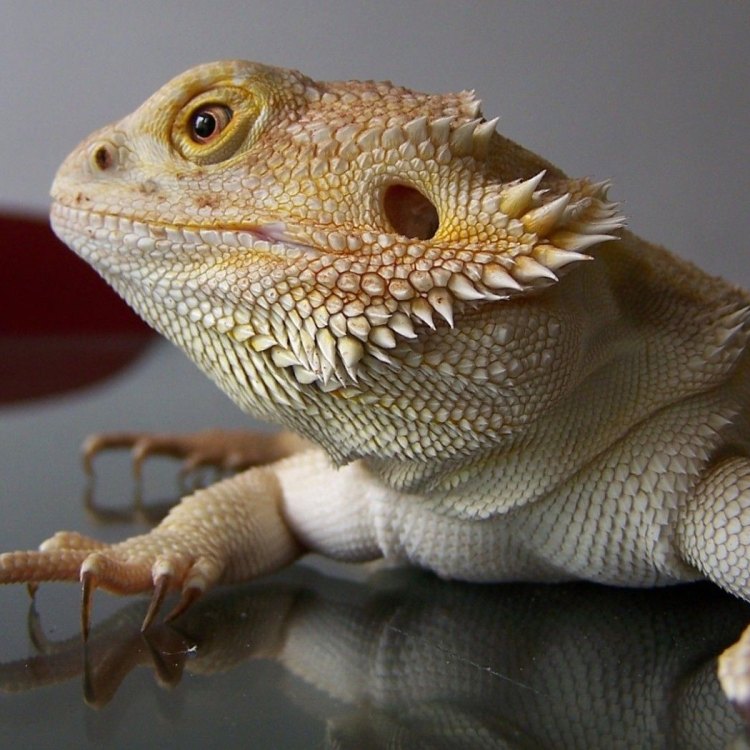
Bearded Dragon
- Adult Size: 18-24 inches
- Average Lifespan: 8-12 years
- Reproduction: Sexual
- Reproductive Behavior: Mating occurs during the warm months of the year
- Sound or Call: Can make a soft hissing sound
- Migration Pattern: Non-migratory
- Social Groups: Solitary, but can live in small groups
- Behavior: Diurnal (active during the day), basking behavior to regulate body temperature
- Threats: Habitat loss, predation by larger reptiles and birds
- Conservation Status: Least Concern
- Impact on Ecosystem: Maintains insect and small rodent populations
- Human Use: Popular pet reptile
- Distinctive Features: Beard-like spikes on throat, spiky scales on body, ability to puff up and darken color when threatened
- Interesting Facts: Can change color to regulate body temperature and communicate, can eat plants, insects, and small animals
- Predator: Larger reptiles and birds
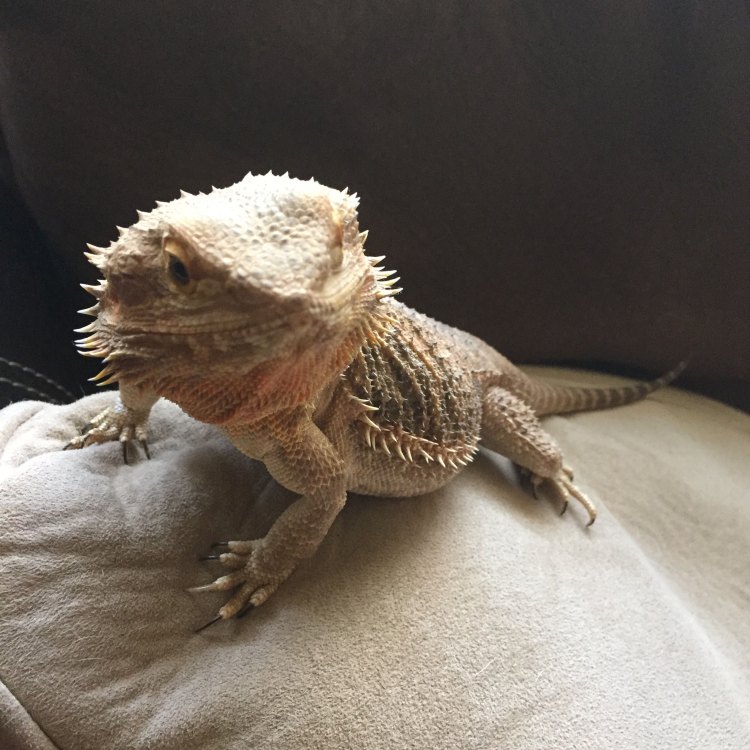
Pogona vitticeps
Bearded Dragon: The Unique and Enchanting Reptile
The world is home to a vast variety of creatures, each with its own unique adaptations and characteristics. Among these is the bearded dragon, a reptile that has captivated the hearts and minds of both reptile enthusiasts and novice pet owners alike. With its distinctive features, interesting behaviors, and important role in maintaining ecosystem balance, the bearded dragon is truly a fascinating animal. In this article, we will delve deeper into the world of this enchanting creature, exploring its biology, behaviors, threats, and human use PeaceOfAnimals.Com.Biology and Adaptations
The bearded dragon, also known as Pogona, hails from the deserts and woodlands of Australia. It is a medium-sized lizard, with males growing slightly larger than females. Its adult size ranges from 18-24 inches, making it a manageable size for pet owners. However, these reptiles have an impressive lifespan of 8-12 years, with some individuals living up to 15 years in captivity.
One of the most distinctive features of the bearded dragon is the "beard" of spikes on its throat, which it puffs out when feeling threatened or during mating displays. This feature is more prominent in males and gives them their name. Additionally, their bodies are covered in spiky scales, providing them with protection and camouflage. These scales also assist the bearded dragon in regulating its body temperature. As ectothermic creatures, they rely on external sources to regulate their body heat Boxer Dog. They have unique basking behavior, where they will perch in the sun to raise their body temperature, and then retreat to the shade to cool down.
But perhaps the most fascinating adaptation of the bearded dragon is its ability to change color. They have specialized cells called chromatophores in their skin that allow them to adjust their color and pattern to blend in with their surroundings. This not only helps them camouflage from predators, but it also serves as a form of communication, with different colors and patterns representing different moods and behaviors.
Behavior and Reproduction
Bearded dragons are diurnal creatures, meaning they are active during the day and sleep at night. They are solitary animals in the wild, but can also live in small groups, especially during their juvenile stages. Mating occurs during the warm months of the year, and during this time, the males will display their colorful throats to attract females. The courtship ritual involves head bobbing, arm waving, and other elaborate displays.
Once the male and female have mated, the female will lay her eggs in a shallow burrow in the sand. The eggs will hatch after approximately 60 days, and the young will emerge, ready to fend for themselves. Bearded dragons reach sexual maturity around the age of one or two, and can reproduce for the rest of their lives.
Threats and Conservation Status
In their native habitat, bearded dragons face several threats. Habitat loss due to urbanization and agriculture is a major concern, as it decreases available resources for these reptiles. They are also preyed upon by larger birds and reptiles, as well as introduced species such as cats and dogs.
Despite these threats, the bearded dragon is listed as "Least Concern" on the IUCN Red List of Threatened Species. This is due to its widespread distribution and stable populations. However, it is still important to protect these creatures and their habitats to ensure their continued survival.
Impact on the Ecosystem
Bearded dragons play an essential role in maintaining the balance of their ecosystem. As insectivores, they primarily feed on insects, but they can also consume small rodents, plants, and even smaller lizards. By controlling insect populations, they prevent these creatures from becoming pests and causing damage to crops and vegetation. They also serve as a food source for larger predators, contributing to the food chain in their ecosystem.
Human Use and Interesting Facts
One of the more well-known uses of bearded dragons is as a popular pet reptile. Due to their manageable size, docile nature, and unique appearance, they have become a beloved companion for many reptile enthusiasts. However, it is crucial for potential pet owners to properly research and understand the needs and care requirements of these creatures before bringing them home.
Aside from being a popular pet, bearded dragons also have some interesting capabilities and behaviors. As mentioned earlier, they can change color to communicate and regulate their body temperature. But did you know that they can also communicate with each other through a soft hissing sound? They may also "arm wave" as a sign of submission or to establish dominance within a group.
Final Thoughts and Conclusion
The bearded dragon is truly a remarkable creature, with its distinct features, interesting behaviors, and important role in the ecosystem. From its ability to change color to its basking behavior to its role in insect control, this reptile is a fascinating addition to the natural world. It is our responsibility as humans to protect these creatures and their natural habitats so that they may continue to thrive for generations to come. So the next time you see a bearded dragon, take a moment to appreciate its unique beauty and significance in the world.
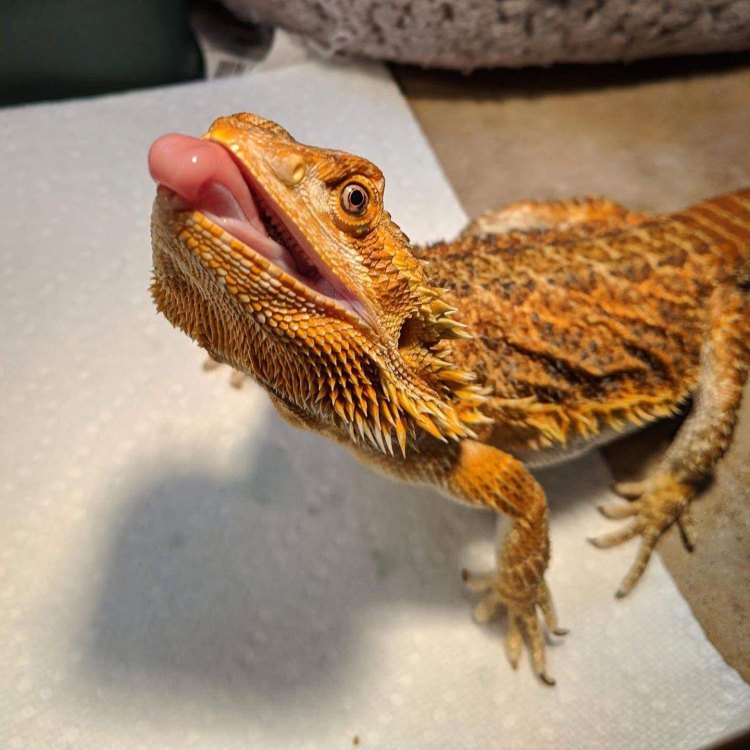
The Unique World of Bearded Dragons: Fascinating Creatures of Australia
Disclaimer: The content provided is for informational purposes only. We cannot guarantee the accuracy of the information on this page 100%. All information provided here may change without prior notice.


